FISH IN CYCLE.
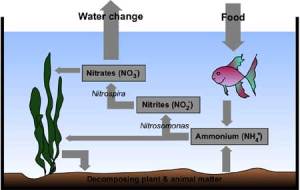
you set up a tank and you already have fish and then hear about the importance of cycling and wonder what to do now.
If it is at all possible you should return these fish to the store and then do a fishless cycle. I know you may be attached to your fish and may not want to part with them, so lets work on keeping them, however you must be prepared to accept that some of these fish may die over the next few weeks, you will need to do a lot of hard work to get through it………..Be prepared……… Buy a good water test kit. API Master test kit is one of the best, liquid tests give better reading than strips.
Still want to keep your fish? Cool, Do you know anyone with a mature filter? Is so ask them for one third of their media in return for some new media materials. This will contain the bacteria you need to get your filter started, help your fish survive and will take a lot of work out for you. Remember if you get some you must be careful transporting it, you should keep it in tank water and get it into your filter within 12 hours. If you do this you should still follow the instructions below, it’ll just be easier and quicker for you.
If you can’t get any mature media then you’re going to have to work harder. Firstly you need to look at what fish you have in the tank, you actually need to have a reasonable amount of fish to get your cycle going, I recommend about a quarter of the total stocking for the tank. The recommended stocking level is 1″ of fish per US gallon of water. So if you have a 20 gallon tank, you should eventually aim for 20″ of fish (not 1 20″ fish, but 20″ total combined from many small fish).To cycle the tank you need a quarter of this so 5″ of fish. Look up what fish you have, check what size they get to, add it all up and it should come to a quarter of the size of your tank is US gallons. This isnt exact so a rough estimate will suffice.
Once you’ve got the number of fish sorted out you need to test your water for pH, ammonia, nitrite and nitrate. Keep a log of the date you took the reading and what results you got. You will almost definitely get a reading for ammonia, possibly get one for nitrite and possibly for nitrate depending how long the tank has been running and what your tap water contains.
You can expect your results for ammonia to go up then down while the others stay relatively low, then when ammonia has almost dropped to 0 nitrite will start to rise and then fall, and nitrate will start creeping up. When ammonia and nitrite have dropped to 0 then you have a cycled filter.
So now every single day you should check your readings, if you get a reading for ammonia or nitrite that isn’t 0 you should carry out a 20% water change. This will most likely be every day for a few weeks; it can even take months in some cases. If you get some mature media you may find it’s done in a few days.
When you do water changes you should also vac the substrate and pick up any uneaten food or fish poo. However don’t be too thorough as some of the bacteria you need will live in your substrate and you don’t want to kill them off. Make sure you add dechlorinator to the water you put into the tank.
This will go on for a couple of weeks, it will be boring and hard work, but sadly it has to be done, doing it will save your fish.
Remember some medications can stop your tank cycling. So be extra vigilant for sick fish as you don’t want to be treating the full tank if you can avoid doing so.
Now eventually your readings for ammonia and nitrite will reach 0 and you can stop doing daily water changes. You should now cut back to between 10% and 25% water changes once a week. Please remember though, just because your filter is cycled it is only able to cope with the amount of waste your current fish produce, if you just get a whole load more the filter won’t cope and you’ll have to go through this all over again. From now on you should add fish very gradually, a couple at a time then keep testing the water, you may see a mini cycle in which case do your water changes again until it’s finished, then leave the tank a week or so and add some more fish. Very gradually over a few months your filter bacteria will build up and you’ll be able to finish stocking your tank.
Article written by Malakye
http://aquatropicalfish.com/forum/index.php?action=profile;u=347
Filed under: Fish in Cycle | Leave a comment »



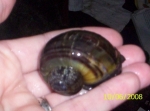
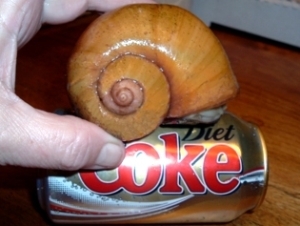
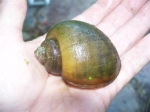
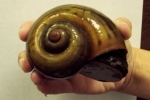




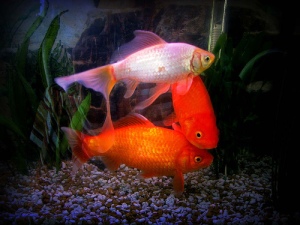
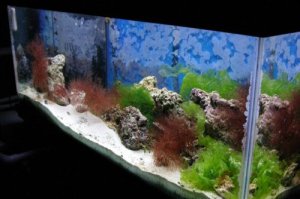 There are many factors as to why oxygen levels can drop in the aquarium water. Fish consume oxygen,plants use oxygen at night and even the beneficial filter bacteria need oxygen to thrive.Any rotting leaves in the tank need it in the decaying process. But how do we replace the oxygen and improve the Redox levels.
There are many factors as to why oxygen levels can drop in the aquarium water. Fish consume oxygen,plants use oxygen at night and even the beneficial filter bacteria need oxygen to thrive.Any rotting leaves in the tank need it in the decaying process. But how do we replace the oxygen and improve the Redox levels. One of the main reasons that many keepers do not start a discus tank is because these are suppossed to be very difficult to keep and expensive to buy. If given the right advice initially this is not the case. Where do we start when considering a discus set up, this starts right away with selection and positioning of the tank. There are a few basic rules that must be followed:- 1 Each discus fish requires at least 10 gallons space in the tank, as these fish should never be kept in groups of less than 6, the tank should be a minimum size of 60 gallons. 2 Discus fish get spooked by leg movement if front of the tank, the only way of avoiding this is to have the tank raised to at least 3 feet from the floor by an adequate stand or cabinet. 3 The tank should not be placed where there is a lot of room traffic, this is asking for trouble, the fish will hide a lot and become very nervous if there are people passing by the tank all of the time. 4 I often hear that discus are tolerant of higher PH nowadays, this I disagree with, they will live in a pH of 7 but to be at their best colouration and happiest, they need to be kept in soft, acidic water with a pH of 6.0-6.5 and a KH of 4-5 When discus are content they will recognise you and be very aware of their surroundings, even taking to stare at the television iif it is switched on. As you approach the tank they should swim to you and be eating out of your hands in a short space of time. Before you set up your tank you will need to know the water parameters of your mains water. If it is too hard then an RO(reverse osmosis) unit may be needed to lower the KH, this will make controlling the pH much simpler. Some areas are lucky and have perfect water conditions for these fish, but not many. Chloramines (this is a blend of ammonia and chlorine) are definately not good news for discus, so water conditioners or an HMA filter is a must. When setting up your tank, consider the natural habitat of these fish. Use bogwood to simulate submerged root systems, a selection of plants that will grow vertically rather than bush out. I find Swords, Vallisneria and some species of crypts are ideal for this. The ideal temperature for discus is between 28-30 deg C,this also helps with the discus health as many parasites and bacteria cannot survive these higher temperatures. Regular water changes are also required, by regular I would recommend daily water changes of at least 10%, this aids in the growth of the fish as well as keeping the water quality pristine.
One of the main reasons that many keepers do not start a discus tank is because these are suppossed to be very difficult to keep and expensive to buy. If given the right advice initially this is not the case. Where do we start when considering a discus set up, this starts right away with selection and positioning of the tank. There are a few basic rules that must be followed:- 1 Each discus fish requires at least 10 gallons space in the tank, as these fish should never be kept in groups of less than 6, the tank should be a minimum size of 60 gallons. 2 Discus fish get spooked by leg movement if front of the tank, the only way of avoiding this is to have the tank raised to at least 3 feet from the floor by an adequate stand or cabinet. 3 The tank should not be placed where there is a lot of room traffic, this is asking for trouble, the fish will hide a lot and become very nervous if there are people passing by the tank all of the time. 4 I often hear that discus are tolerant of higher PH nowadays, this I disagree with, they will live in a pH of 7 but to be at their best colouration and happiest, they need to be kept in soft, acidic water with a pH of 6.0-6.5 and a KH of 4-5 When discus are content they will recognise you and be very aware of their surroundings, even taking to stare at the television iif it is switched on. As you approach the tank they should swim to you and be eating out of your hands in a short space of time. Before you set up your tank you will need to know the water parameters of your mains water. If it is too hard then an RO(reverse osmosis) unit may be needed to lower the KH, this will make controlling the pH much simpler. Some areas are lucky and have perfect water conditions for these fish, but not many. Chloramines (this is a blend of ammonia and chlorine) are definately not good news for discus, so water conditioners or an HMA filter is a must. When setting up your tank, consider the natural habitat of these fish. Use bogwood to simulate submerged root systems, a selection of plants that will grow vertically rather than bush out. I find Swords, Vallisneria and some species of crypts are ideal for this. The ideal temperature for discus is between 28-30 deg C,this also helps with the discus health as many parasites and bacteria cannot survive these higher temperatures. Regular water changes are also required, by regular I would recommend daily water changes of at least 10%, this aids in the growth of the fish as well as keeping the water quality pristine.

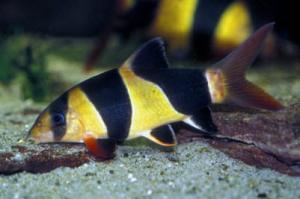 I am going to start out on saying that almost all loaches want to be in groups. Loaches are not scaless fish; their scales are tiny and closely knit, giving the illusion that they are scaless. That being, they are still highly vulnerable to salt and medication, as they can easily burn the loach’s body. No salt should ever be used with loaches, as the ‘cure’ can be fatal.
I am going to start out on saying that almost all loaches want to be in groups. Loaches are not scaless fish; their scales are tiny and closely knit, giving the illusion that they are scaless. That being, they are still highly vulnerable to salt and medication, as they can easily burn the loach’s body. No salt should ever be used with loaches, as the ‘cure’ can be fatal. So you have your tank, you have it decorated with substrate, plants, ornaments, you have filled with conditioned water, your filters in and running your heaters fitted, so are you ready to add fish? Simple answer is NO.
So you have your tank, you have it decorated with substrate, plants, ornaments, you have filled with conditioned water, your filters in and running your heaters fitted, so are you ready to add fish? Simple answer is NO.